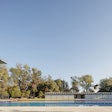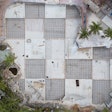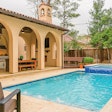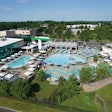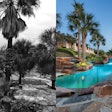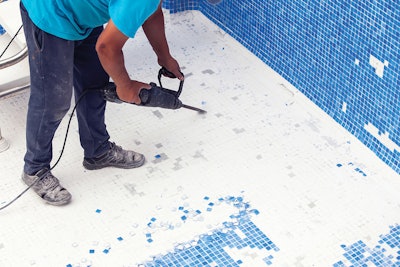
Pool builders who want to practice renovations and remodeling of old pools take on an enormous challenge that, if not answered, will merely produce the same unsatisfactory results in the new version. The two big-picture questions that must be answered before embarking on a pool renovation or remodel are how and why.
The how involves the more technical aspects of the project: the condition of the current shell, what created the existing problems, if it is possible to add new features like a vanishing edge or a spa, and whether the vessel can even survive the repairs.
The why involves the design and true purpose of the renovation. When clients ask for a pool remodel, they already know what they don’t like about their current pool. It is your responsibility as the pool contractor to ensure the remodel is, in fact, an improvement over the original. Every pool deserves thoughtful design, but the design of a remodel must truly be intentional.
It is often the pool service company who is first asked to do a renovation. The pool owner is familiar with his or her service and maintenance technician and trusts their work, and when something breaks, they are asked to fix it. It usually starts as a minor request, such as a piece of equipment that needs to be replaced. This can lead to updating and repairing design elements, and eventually remodeling the entire vessel.
TYPES OF RENOVATIONS
The most basic type of renovation is a materials-only flip. The pool owner wants to change the tile, coping, or interior finish. This type of renovation can be done with sub-contractors and is generally straightforward. However, one common incorrect belief is that you can change out one of these three items without touching the other two. Although you can sometimes change the interior finish without changing the tile or coping, most of the materials-only flips require all three to be changed. It is important to let the client know before you even begin on a materials-only flip that it is a long process and will probably require more work than they originally anticipated.
The second, more challenging type of renovation is correcting physical defects, such as leaks.
DUE DILIGENCE
Pool professionals must determine everything they can about the subject pool before they take on a physical defect renovation. There are many questions that must be asked and answered before you even touch the pool. The industry saying goes, “You touch it, you own it.” If you are just starting out in remodels and renovations, it is highly recommended that you work with an engineer who can get the answers to these questions.
Does it leak? Has it always leaked? What are all the sources of leaks? What kind of foundation does it have? How well designed was the shell? What problems are prompting the remodel? Cracking? If so, are the cracks still active or have they long ceased to expand? Is the pool moving? If yes, that pool cannot be successfully remodeled unless the cause of movement is determined and halted.
FIND THE WATER
Unfortunately, a common mistake, which is so easy to avoid, is high water table and buoyancy of the pool shell. The pool contractor may only intend to change out the coping, the waterline tile, and the plaster surfaces, but if the pool floats, he or she may find themselves replacing far more. A water table even 3 feet below the surface could float a concrete pool if the ballast (the pool water) is removed! A pilot hole near the pool would tell the tale. Opening up hydrostatic relief valves in the main drain would work. Or, you can simply core or break through the pool floor if it is to be remodeled anyway. One common misconception is that a floated pool can just be refilled and expected to drift back into position. This is not the case! Once floated, the pool will never resume its original position.
UNDERSTAND THE PLUMBING
A common problem in renovation is tracing out the pipe. So difficult is this step, especially with pools with multiple pumps, multiple features, diverter valves, and shared drains, that sometimes it is better to simply abandon the old circulation and feature piping system rather than attempting to find all the branches, restrictions, buried check valves, and other impediments.
If you are adding a new water-in- transit feature that requires a surge tank, you also have to take into account the space required to put in the surge tank as well as the additional space required to be able to access it for future service. Can the yard or structure handle this new feature?
FALLING IN LOVE WITH THE PROJECT
There have been some fantastic restorations in recent years with pools that date back to the 1920s. The old hexagonal tiles, copper expansion joints, and unmatchable tile and coping make the pool a worthwhile restoration project — sometimes. If the shell is deficient structurally, the cost of remediation might exceed any possible increase in valuation. Historical preservation has its limits. There may be a very good reason that old pool was abandoned and backfilled before the new owner inherited it! When assessing options, one option has to be the “nuclear option”: demolish and remove or find a new place on the site to build your award winner.
FOLLOW THE PRINCIPLES OF DESIGN
When remodeling a pool, there are three key design considerations to keep in mind. You as the pool contractor must have an understanding of these design principles so that you can share these with the pool owner and keep the design intentional.
The first is material choice. Pool materials have specific physical limitations — namely, is the material able to get wet or be constantly submerged in water? One way that pool contractors address this is by using suppliers that are specific to the pool industry. When you do this, though, you are limiting your choices and the pool will often have a similar look to the majority of other pools. If you understand what the limitations are and what materials meet those requirements, you can expand your material selections and design a more unique pool.
The second is reducing the different number of materials used. Pool contractors who do not have a design background often send clients to pick their own materials, with a checklist of the different items needed: raised bond beam, coping, waterline tile, interior finish, paver, etc. The client then thinks they need to pick a different material for each item. But you as the pool contractor can help the pool owner understand that the more materials they combine, the better the pool will look. Explain to your client that they can use the same material for the coping and the wall cap, or the same material for both the waterline tile and the bond beam veneer. It’s probably possible to find eight materials that look great together, but it is far easier to find three. Reducing the number of materials makes a huge aesthetic impact on the final swimming pool.
The third is waterline tile selection. Pool owners often feel they have to pick a waterline tile that is particularly showy. However, pool contractors who understand design understand that the waterline tile should never be flashy. You don’t want people looking at the edge of the swimming pool; you want them looking at the water. If you can match the waterline tile to the interior finish or to the coping, and have that material be very understated, it eliminates the transition from inside of water to outside of water. One way to help explain this to your clients is by showing them photos of actual pools that follow this design principle. They will immediately understand and agree with you.
EDUCATE AND ELEVATE
As a pool professional, education is key to having a successful career. Before endeavoring on pool renovations, whether they be smaller materials-only flips or complete engineering overhauls, knowing the fundamental principles is paramount to delivering what your clients want.
GENESIS, a company of the Pool & Hot Tub Alliance (PHTA), is launching a new pool remodeling school this year. This course will not only be focused on physical defects and how to fix them, but design and materials- only flips as well. It will cover what is and is not feasible physically — such as making the pool bigger or smaller, adding a spa, or creating a water-in- transit detail — and how to correctly make those kinds of updates.
There are many more remodels in the pool industry than there are new pools. Of those remodels, the materials-only flip is the most common. The new GENESIS remodeling school will address how to do that and what you need to know in order to do that properly. Students will learn about the physical limitations of materials, the cost differences, and the design choices that can be made at that point in the remodel.
Whether you are working with the most high-end clients or the most basic of backyard pools, the new GENESIS remodeling school will have information that can be used at every level of the pool industry.
In the end, the satisfaction the client gets from their pool remodel is not just about the fact that the pool stopped leaking or that a spa was added. What they will notice and appreciate every day is how good the pool looks from a design perspective. As a pool contractor, if you are able to offer even just a small amount of design direction, that will help immensely with the final look of the project and, therefore, the happiness of your client.
This article first appeared in the March 2023 issue of AQUA Magazine — the top resource for retailers, builders and service pros in the pool and spa industry. Subscriptions to the print magazine are free to all industry professionals. Click here to subscribe.
































